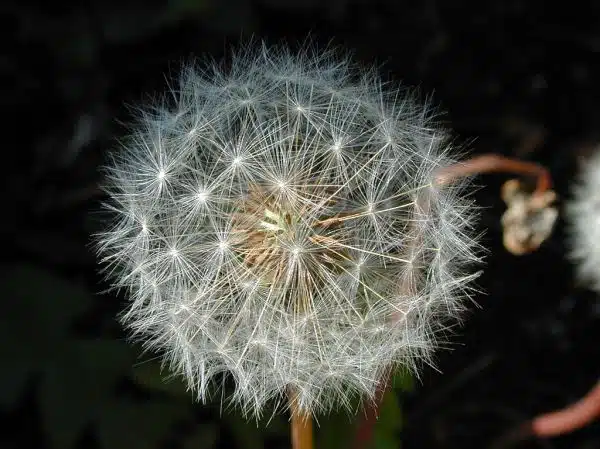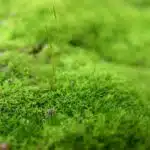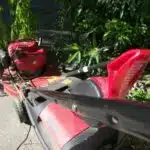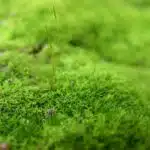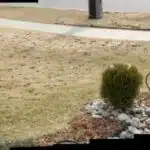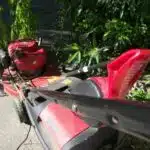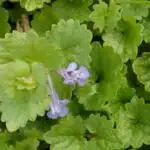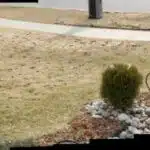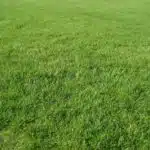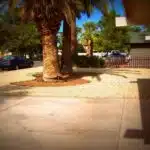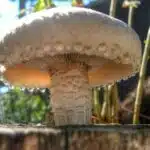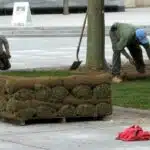Dandelions are a common sight in many lawns and gardens. While some people may find them to be aesthetically pleasing, others see them as a nuisance that needs to be removed. Dandelions can quickly spread throughout your yard, making it difficult to maintain a uniform appearance. In addition, they can compete with other plants for nutrients and water, which can ultimately harm the health of your lawn. As a horticulture expert, I have seen firsthand the damage that dandelions can cause to a lawn or garden. Fortunately, there are several effective methods for removing these pesky weeds and restoring the beauty of your yard.
In this article, we will explore various ways to remove dandelions from your yard. We will discuss both natural and chemical methods for eliminating these weeds, as well as preventative measures you can take to discourage their growth in the future. Whether you are a seasoned gardener or just starting out, this guide will provide you with valuable information on how to keep your yard free of dandelions and looking its best all year round. So let’s roll up our sleeves and get started!
The Anatomy Of A Dandelion
The dandelion, with its bright yellow petals and fluffy white seed heads, is a familiar sight in many lawns and fields. But beneath its cheerful exterior lies a complex and hardy plant. Understanding the anatomy of a dandelion is key to removing it from your yard.
The dandelion’s life cycle begins with its long taproot, which can reach up to 10 inches deep in the soil. This root system allows the plant to survive dry conditions and regrow even after being cut down or pulled up. In the spring, the dandelion sprouts green leaves that grow close to the ground in a rosette pattern. As summer approaches, the plant sends up tall stems topped with bright yellow flowers.
In order to effectively remove dandelions from your yard, it’s important to understand their root anatomy. The taproot of a mature dandelion can be several feet deep, making it difficult to pull out by hand or with traditional weeding tools. Additionally, if even a small piece of the root remains in the soil after removal, the plant can regrow quickly. With this knowledge in mind, let’s explore some strategies for safely and effectively getting rid of these pesky weeds.
Understanding The Risks Of Dandelions
Having learned about the anatomy of a dandelion, it is important to understand the risks associated with this weed. While they do have some benefits such as providing nectar for bees and being a source of food for certain animals, they can also spread quickly and take over your lawn if left unchecked.
One way to prevent dandelions from spreading is by removing them manually. This can be done using a tool designed specifically for this purpose, or simply by pulling them out by hand. Another method is to mow your lawn frequently, which will prevent the flowers from setting seed and spreading further.
If you’re feeling adventurous, there are also many delicious recipes that incorporate dandelions as an ingredient. From salads to teas and even wine, these plants are surprisingly versatile in the kitchen. However, it’s important to ensure that any dandelions used in cooking have not been treated with herbicides or other chemicals that could be harmful if ingested.
Moving forward, natural methods for removing dandelions will be discussed. These methods are effective without resorting to harsh chemicals that can harm the environment and other living organisms in your yard.
Natural Methods For Removing Dandelions
- Vinegar is an effective natural method for removing dandelions from your yard, as it alters the pH of the soil to inhibit the growth of the weed.
- Pulling up dandelions by hand is a labor-intensive process, but it is also a reliable way of removing the weed and its roots.
- Applying a natural, non-chemical herbicide to the dandelions is a safe and straightforward way of eliminating the weed, as long as the herbicide is not harmful to other plants in the yard.
- When using vinegar, it is important to note that a high concentration may damage other plants in the vicinity of the dandelions.
- Pulling up dandelions is a good method of controlling the weed, as long as all of the roots are removed from the soil.
- Herbicides should always be used with caution, and it is important to read the label to ensure that the product is safe for use in residential yards.
Using Vinegar
Walking through a well-manicured lawn is a satisfying feeling. However, the presence of dandelions may ruin the beauty of your yard. If you’re looking for a natural and affordable way to remove these pesky weeds, using vinegar could be your solution. Vinegar alternatives such as apple cider vinegar or white vinegar can be used in the process.
Vinegar effectiveness in removing dandelions lies in its high acidic content that dries out and kills the plant’s leaves. To apply vinegar effectively, pour it directly onto the weed’s leaves and expose them to sunlight for maximum effect. It’s advisable to do this on a sunny day when there is no rain forecasted for at least 24 hours.
While using vinegar may not be an instant solution, it has long-term benefits as it prevents dandelions from regrowing. However, you must note that vinegar can also kill other plants if oversprayed. Therefore, it would help if you were cautious while applying it to prevent damaging surrounding vegetation. Ultimately, incorporating vinegar into your lawn maintenance routine will keep your lawn healthy and weed-free without breaking the bank on synthetic herbicides.
Pulling Up Roots
To effectively eliminate dandelions from your lawn, it’s essential to remove the roots as well. Pulling up roots may seem like a daunting task, but there are several techniques that you can use to make the process easier. These root removal techniques will ensure that the weeds do not regrow and take over your lawn again.
One way to remove dandelion roots is by hand pulling. You can use a garden fork or a weeding tool to loosen the soil around the weed’s base before pulling it out. Ensure that you pull out the entire root system, including any small pieces left behind, as this will prevent regrowth. It’s advisable to do this after rainfall or watering as the soil will be loose and easier to dig into.
Another technique for root removal is using boiling water. Boil water in a kettle or pot and pour it directly onto the weed’s base, ensuring that it reaches deep into the soil. The hot water will scorch and destroy the plant’s roots, preventing regrowth. This method is effective for killing weeds on driveways and walkways where other plants aren’t present as it can damage surrounding vegetation.
In conclusion, pulling up dandelion roots is an effective way of preventing their regrowth in your lawn naturally. Hand pulling and using boiling water are two techniques that you can use to remove these pesky weeds without synthetic herbicides. Incorporating these methods into your lawn maintenance routine will keep your yard healthy and beautiful without harming the environment or breaking your bank account.
Applying Herbicides
When it comes to removing dandelions from your lawn, there are various natural methods that you can use. However, if you have a severe weed infestation or prefer a quicker solution, herbicide alternatives may be an option for you. Herbicides are chemical substances that kill plants and weeds, and they come in different forms such as liquid sprays or granules. It’s important to note that while herbicides can effectively eliminate dandelions, they can also harm other plants and the environment.
Before applying any herbicides, it’s crucial to read and follow the label instructions carefully. This includes identifying the target plant, selecting the appropriate type of herbicide, and using the correct amount for your lawn’s size. Additionally, take safety precautions such as wearing gloves and protective clothing when handling herbicides to prevent skin contact or inhalation of fumes. Herbicides should only be applied on calm days with no wind to avoid drift onto non-target plants.
If you’re looking for herbicide alternatives, there are several options available. Corn gluten meal is a natural pre-emergent herbicide that prevents weed seeds from germinating. It’s safe for pets and kids but needs to be applied before weeds start growing. Another option is vinegar-based solutions that can be used as a spot treatment for individual weeds. These alternatives may require more frequent applications compared to synthetic herbicides but are safer for the environment and humans alike.
Using A Dandelion Puller
As mentioned earlier, dandelions are a common problem in many lawns. One effective way to remove them is by using a dandelion puller. According to a recent study conducted by the American Lawn Care Association, using a dandelion puller can eliminate up to 90% of dandelions from your yard.
While there are alternative methods for removing dandelions, the use of a puller has several advantages. First, it targets the root of the plant and removes it completely, preventing regrowth. Second, it is an environmentally friendly option that does not require the use of harmful chemicals. Additionally, it is a relatively easy process that can be done without professional help.
To ensure that your lawn remains free of dandelions, it’s essential to take steps to prevent their spread. This includes regular mowing and proper irrigation practices. It’s also important to avoid over-fertilizing your lawn as this can encourage weed growth. By taking these preventive measures and using a dandelion puller as needed, you can keep your lawn looking healthy and vibrant.
Moving on from dandelion pullers, another effective way to remove these pesky weeds is through hand weeding. While this method may be more time-consuming than using a tool like a puller, it allows for greater precision and control when removing individual plants. In the next section, we will discuss the steps involved in hand weeding and provide tips for success.
Hand Weeding Dandelions
One effective way of removing dandelions from your yard is by hand weeding. This method involves the physical removal of dandelions using a hand tool such as a garden trowel or a forked weeder. Hand weeding has several benefits over other methods, including the fact that it is environmentally friendly and does not involve the use of chemicals that may harm other plants or animals in your yard.
Benefits of hand weeding include its effectiveness in removing the entire dandelion plant, including its roots. This ensures that the weed will not grow back, unlike other methods such as mowing or trimming. Additionally, hand weeding allows you to target individual weeds without affecting nearby plants, making it a precise method for weed control. Furthermore, hand weeding provides an opportunity to inspect your lawn for any other potential problems, such as pests or diseases.
However, there are common mistakes to avoid when hand weeding dandelions. One mistake is pulling out only the leaves and leaving behind the root system. This can lead to re-growth and make future removal more difficult. Another mistake is not removing all parts of the plant from the lawn, which can also result in re-growth. Be sure to dispose of the removed dandelions properly to prevent them from spreading seeds and causing further infestation.
Transition: Although hand weeding is an effective method for removing dandelions from your yard, it can be time-consuming and labor-intensive. If you are looking for a faster alternative, pouring boiling water on dandelions may be another option to consider.
Pouring Boiling Water On Dandelions
Hand weeding may be effective, but it can be quite tedious and time-consuming, especially if you have a large yard. This is where the boiling water method comes in handy. Pouring boiling water on dandelions is a quick and easy way to get rid of them. Not only does it kill the weeds, but it also helps prevent them from growing back.
However, using boiling water may not always be practical or safe. For one thing, you need to be careful when handling hot liquids, as there is a risk of scalding yourself or others. Additionally, pouring boiling water indiscriminately can harm other plants nearby. Thus, it’s important to consider alternatives that are equally effective but less risky.
One alternative to the boiling water method is vinegar. Vinegar contains acetic acid, which can damage and kill weeds upon contact. It’s also cheap and readily available in most households. However, vinegar is not selective in its killing; it can harm surrounding plants as well if applied excessively or improperly.
- Dandelions are unsightly and can reduce the aesthetic value of your yard.
- Getting rid of dandelions helps promote healthy growth of other plants.
- Boiling water and vinegar are both environmentally friendly options for weed control.
Given the effectiveness of the boiling water method in killing dandelions, it might seem like the best option for your yard. However, there are several things to consider before going this route. If you’re concerned about safety or potential damage to other plants in your yard, vinegar might be a better choice for you. In the next section, we will discuss how vinegar can serve as an effective dandelion killer without causing harm to neighboring vegetation.
Vinegar As A Dandelion Killer
Using vinegar for weed control is a popular and effective method of eliminating dandelions from your yard. Vinegar is an organic weed killer that is safe for the environment and non-toxic to animals and humans. It works by drying out the plant’s leaves and making it difficult for them to absorb water, which ultimately causes the plant to wither away.
One of the benefits of using organic weed killers like vinegar is that they do not harm the soil or other plants in your yard. Unlike chemical herbicides, which can damage the environment and lead to long-term health problems, vinegar provides a natural solution for controlling weeds without leaving behind harmful residues. Additionally, vinegar can be easily purchased at any grocery store or home improvement center, making it a convenient and cost-effective option for homeowners.
To use vinegar as a dandelion killer, simply mix equal parts white vinegar and water in a spray bottle and apply directly to the plant’s leaves. Be sure to saturate the leaves thoroughly, as this will ensure that the vinegar reaches the roots of the plant. Repeat this process every few days until all traces of dandelions have been eliminated from your yard.
Next section topic: Chemical Methods for Removing Dandelions
When it comes to removing dandelions from your yard, organic weed killers like vinegar are just one option. If you’re dealing with a particularly stubborn infestation or simply prefer more traditional methods of weed control, there are several chemical herbicides available on the market that can effectively eliminate dandelions from your lawn.
Chemical Methods For Removing Dandelions
While mechanical and organic methods can work well for removing dandelions, they may not always be the most practical or effective solution. In such cases, chemical methods may offer a viable alternative. However, it’s essential to use caution when utilizing herbicides in your yard to avoid harming desirable plants and wildlife.
When considering herbicide alternatives, one option is to use a vinegar solution. This method involves spraying a mixture of vinegar and water directly onto the dandelion plant until it dies. While this approach can be effective, it may require multiple applications, and it’s not a long-term solution.
Another option is to use a selective herbicide that targets only broadleaf weeds like dandelions while leaving other plants unharmed. These products often contain chemicals like 2,4-D or dicamba and should be used according to their instructions carefully. When applied correctly and regularly over time, selective herbicides can provide an effective long-term solution for controlling dandelions in your yard.
By using these chemical methods along with other solutions mentioned above, you can keep your lawn healthy while minimizing the appearance of unsightly dandelions. But before applying any herbicide product in your yard, make sure to read the label carefully and follow all safety precautions to protect yourself and the environment around you.
Using A Selective Herbicide
Selective herbicide application is a common method of controlling dandelions in lawns. When used correctly, it can be very effective and environmentally friendly. The key to successful selective herbicide application is timing and dosage.
Timing is important because the herbicide needs to be applied when the dandelions are actively growing. This usually occurs in the spring or fall when temperatures are moderate and there is adequate moisture in the soil. It is also important to apply the herbicide before the dandelions have gone to seed, as this will prevent them from spreading further.
Dosage is also critical when using selective herbicides. Too little and the dandelions may not be effectively controlled; too much and other plants in your lawn may be damaged. Be sure to carefully follow the instructions on the label, as different products may require different dosages.
By following these guidelines for selective herbicide application, you can effectively control dandelions in your yard without harming other plants or the environment. However, if you have a severe infestation or prefer not to use chemicals, applying a non-selective herbicide may be a better option.
Applying A Non-Selective Herbicide
Using a selective herbicide can be an effective way to control dandelions in your yard, but it’s important to consider the potential environmental impact. A recent study found that the most commonly used selective herbicides contain chemicals that can harm beneficial insects and contaminate water sources. In fact, these herbicides are one of the leading causes of water pollution in urban areas.
Fortunately, there are alternative methods for controlling dandelions that are less harmful to the environment. One option is to manually remove the weeds by digging them up with a weeding tool or pulling them out by hand. This method requires more effort than using a herbicide, but it allows you to target specific plants without harming beneficial insects or polluting nearby water sources.
Another alternative is to use a non-selective herbicide, which kills all plants it comes into contact with. While this method is not as targeted as using a selective herbicide, it can be effective for controlling large areas of weeds or preventing them from spreading to other parts of your yard. However, it’s important to use caution when applying any type of herbicide and follow all safety guidelines to minimize environmental impact.
To prevent dandelions from returning, it’s important to maintain healthy soil and grass. This means regularly fertilizing your lawn and aerating the soil to improve drainage and reduce compaction. Additionally, mowing your lawn at the proper height can help shade out weed seeds before they have a chance to germinate. By taking these steps and considering alternative methods for weed control, you can enjoy a beautiful lawn without compromising on environmental health.
Preventing Dandelions From Returning
Lawn care is essential for maintaining a healthy, weed-free yard. One important step in preventing dandelions from returning is to keep your lawn well-maintained. Regularly mowing your lawn at the appropriate height will prevent dandelions from going to seed and spreading across your yard. Additionally, be sure to water your lawn deeply and infrequently rather than with frequent shallow watering.
Another method of weed prevention is to use a pre-emergent herbicide. This type of herbicide prevents weeds from germinating by creating a barrier in the top layer of soil. Apply the pre-emergent herbicide in early spring before the soil temperature reaches 55 degrees Fahrenheit.
Mulching is also an effective way to prevent dandelions and other weeds from returning to your yard. Mulch helps retain moisture in the soil while also suppressing weed growth. A layer of 2-3 inches of mulch around plants, trees, and shrubs can help reduce weed growth.
- Regularly mow your lawn at the appropriate height
- Water deeply and infrequently
- Use a pre-emergent herbicide
- Apply mulch around plants, trees, and shrubs
- Remove any weeds that do emerge immediately
By following these simple steps for weed prevention, you can help maintain a beautiful lawn free of pesky dandelions. In the next section, we’ll discuss how to maintain a healthy lawn overall for optimal results.
Maintaining A Healthy Lawn
Now that you have successfully removed the dandelions from your yard, it is important to maintain a healthy lawn to prevent their return. Lawn maintenance plays a crucial role in weed control and involves several essential practices. Mowing your lawn regularly at a height of 2-3 inches not only promotes healthy grass growth but also discourages weed growth.
Another crucial aspect of lawn maintenance is watering. Ensure that you water your lawn deeply once or twice a week instead of frequent shallow watering. This practice encourages deeper root growth, making your grass stronger and more resistant to weeds. Additionally, overwatering can create an ideal environment for weed growth and lead to fungal diseases, so be careful not to overdo it.
Weed control is also achieved through proper fertilization of your lawn. A well-fertilized lawn promotes thick and lush grass growth which helps choke out weeds. Soil testing is an excellent way to determine what nutrients your soil needs, allowing you to apply the proper fertilizer accordingly. Fertilizing should be done in early spring and fall as this stimulates healthy root development leading to strong grass growth and less susceptibility to weeds.
Maintaining a healthy lawn takes time and effort but pays off in the long run by keeping pesky weeds like dandelions away. The next section on soil testing and fertilizing will provide insight into how these practices can enhance the health of your lawn further.
Soil Testing And Fertilizing
Soil testing is an essential part of maintaining a healthy yard. It helps you determine the nutrient deficiencies present in your soil and allows you to add necessary amendments. Soil amendment involves adding organic matter like compost or manure to the soil to improve its quality. By doing so, the soil becomes more fertile, retains moisture better, and provides better drainage.
Nutrient deficiency is a common problem faced by homeowners when it comes to lawn care. If left unattended, it can lead to unhealthy grass and weed growth. A soil test will help identify any nutrient deficiencies present in the soil. Once identified, you can amend the soil with fertilizers specific to the nutrient deficiency present.
By amending your soil regularly, you ensure that your yard remains healthy and green throughout the year. However, it’s crucial to remember that too much of anything can be harmful. Over-fertilizing can lead to environmental pollution and harm beneficial organisms in the soil. Therefore, it’s essential to follow recommended guidelines for fertilization and soil amendment as suggested by experts in horticulture.
Incorporating proper mowing and watering techniques into your lawn care regimen further enhances your efforts towards maintaining a healthy yard. Mowing at a higher height promotes deeper root growth while providing shade for weed suppression. Watering deeply but infrequently encourages roots to grow deeper into the ground for better drought resistance. By combining these techniques with regular soil testing and amendment, you create an environment where grass thrives while weeds struggle to survive.
Mowing And Watering Techniques
Proper mowing and efficient watering techniques are crucial to maintaining a healthy lawn, as well as reducing the number of dandelions that grow. One useful metaphor for understanding this concept is to think of your lawn like a person’s hair. Just like hair needs to be trimmed regularly to stay healthy and prevent split ends, lawns need to be mowed at the right height and frequency to stay healthy and prevent weeds from taking over. Additionally, just as hair needs proper hydration to stay nourished and shiny, lawns need efficient watering techniques to thrive.
When it comes to mowing your lawn, it’s important to follow some basic guidelines. First, make sure you’re using a sharp blade – dull blades can damage your grass and make it more susceptible to disease. Second, set your mower blade at the appropriate height for your grass type – cutting too short can stress out your turfgrass and allow weeds like dandelions to take over. Finally, vary your mowing pattern each time you cut your lawn – this will help prevent soil compaction and encourage healthy growth.
Watering your lawn efficiently is also key in preventing dandelion growth. Rather than watering frequently but shallowly, which encourages shallow root growth and weed growth, aim for deep watering sessions less often. This will encourage deep root growth that is better able to withstand drought conditions and compete with weeds like dandelions. Additionally, try not to water during the hottest part of the day – early morning or late afternoon is best.
To truly achieve a beautiful dandelion-free yard, consider hiring a professional lawn care service. These experts have years of experience in maintaining lawns of all types, from fertilizing properly to identifying problem areas before they become full-blown issues. Plus, they can save you valuable time that would otherwise be spent on yard work – time that you could use for other activities that bring you joy!
Hiring A Professional Lawn Care Service
Mowing and watering techniques play a crucial role in maintaining a healthy lawn, but they are not enough to keep dandelions at bay. These pesky weeds can spread rapidly, leaving your yard looking unsightly and unkempt. The best way to remove them is by uprooting them from the soil.
One effective way to control dandelions is through lawn aeration and overseeding techniques. Aeration involves punching small holes in the soil, allowing air, water, and nutrients to penetrate deep into the roots of your grass. This helps strengthen the grass and makes it less susceptible to weed growth. Overseeding involves spreading new grass seed over your existing lawn to fill in bare spots and create a denser turf that can crowd out weeds.
While DIY dandelion removal may seem like an affordable option, it comes with its own set of challenges. Pulling out weeds by hand can be time-consuming and physically demanding, especially if you have a large yard. Additionally, if not done correctly, you risk damaging your lawn or leaving behind roots that can quickly regrow into new weeds. Hiring a professional lawn care service may be more expensive upfront but can save you time and effort in the long run while ensuring proper removal of dandelions.
- Pros of DIY Dandelion Removal:
- Affordable
- Allows for hands-on control over weed removal
- Can be done at any time convenient for the homeowner
- No need to coordinate with outside contractors
In conclusion, while mowing and watering are essential for keeping your lawn healthy, removing dandelions requires additional effort. Lawn aeration and overseeding can help prevent weed growth while hiring professionals ensures proper removal without damaging your turf. Ultimately, whether to attempt DIY removal or hire professional services depends on personal preference, budget constraints, and available time for maintenance.
Conclusion
The presence of dandelions in a lawn can be a cause for concern, as they can spread rapidly and reduce the aesthetic appeal of your property. Understanding the anatomy of a dandelion and the risks associated with their growth is essential to effectively combat them. Natural methods such as using a dandelion puller or hand weeding are options, while maintaining a healthy lawn through soil testing, fertilizing, mowing, and watering can prevent their growth in the first place.
It is important to note that removing dandelions from your yard requires patience and persistence. It may take some time before you notice significant results. However, with proper maintenance techniques and consistent efforts, you can achieve a vibrant and attractive lawn free from unwanted weeds.
Ultimately, seeking the help of professional lawn care services may be necessary in cases where dandelions have become too difficult to manage on your own. By implementing these effective strategies and taking proactive measures to protect your lawn’s health, you can enjoy a beautiful outdoor space that adds value to your home while minimizing the impact of pesky weeds like dandelions.
Image Credits
- “Dandelion” by D H Wright (featured)

